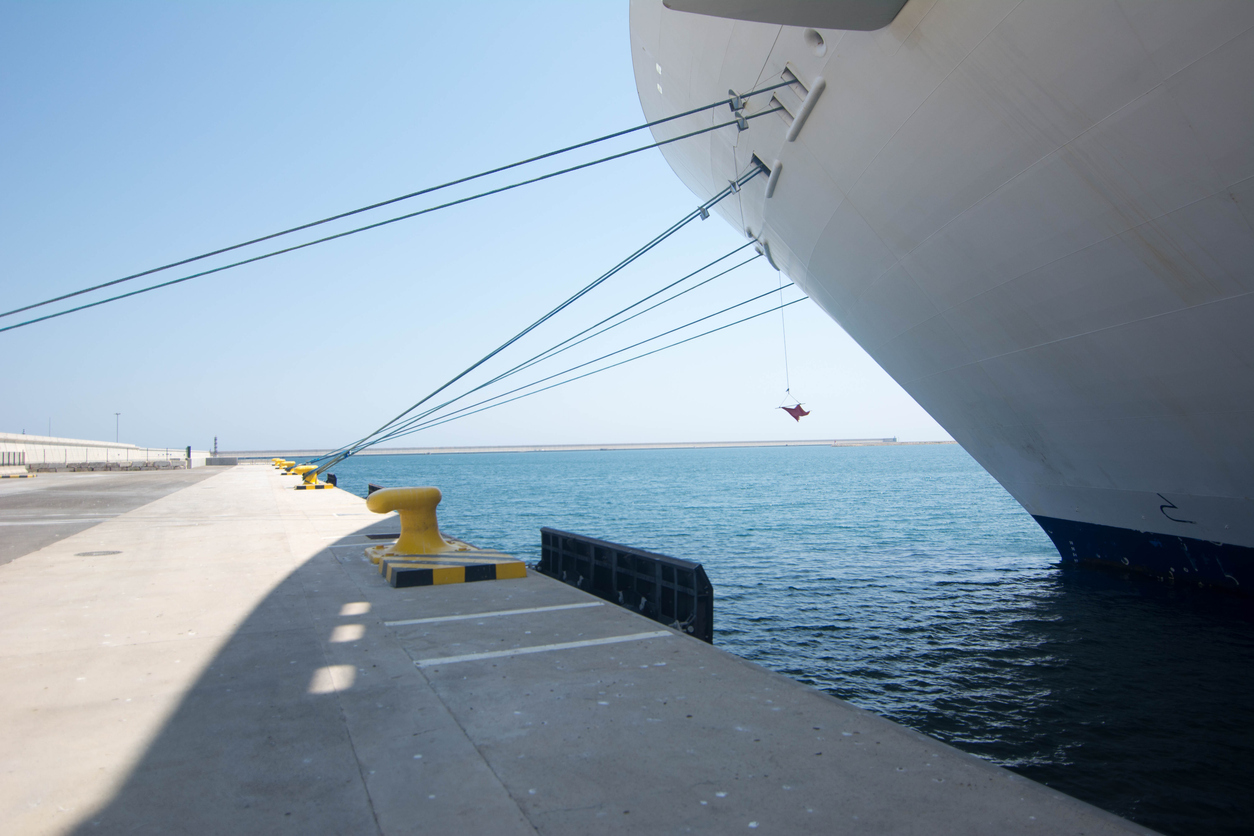
5 Critical Mooring Tips to Remember
December 10, 2020
Mooring is a critical aspect of ship operations. Whether mooring to a fixed structure like a dock or port berth, or affixing a ship to a floating platform or other vessel, mooring operations represent significant risks. Both mariners and their vessels have been lost to errors in mooring; a serious incident can result in expensive property damage or loss and the death of seafarers. Understanding the risks inherent in mooring can supplement the protections of commercial marine insurance, protecting vessels, cargo, and their crews.
Mooring: An Overview
Commercial cargo vessels are designed to be affixed during loading and unloading operations. Each vessel is configured with mooring equipment, including port and starboard bow anchors, stern anchors, and cleats or other fixtures to attach lines. The purpose of mooring is to hold a vessel stationary, either to a land-based structure or a mooring station offshore. This stationary positioning facilitates refueling and cargo loading/unloading operations. During mooring, the vessel is subjected to winds, tidal movements, and swells; in severe conditions, multiple mooring methods may be employed to help keep the vessel oriented correctly.
If mooring is inadequate or configured in a way that allows the ship to move from its fixed position, injury and property damage may result. While commercial marine insurance is the foundation of at-sea risk management, being aware of the common risks associated with mooring can help keep shipboard workers safe.
Risks in Mooring
There are many potential negative outcomes of poor mooring, resulting in the injury or death of crew and damage or loss of cargo and vessels. Some of the most common mooring-related risks include:
- Injuries from snapped mooring lines.
- Crewmembers swept overboard.
- Loss of cargo during loading or unloading.
- Collisions between the vessel and mooring structures or other ships.
- Failure of mooring equipment leading to injury or death.
- Inadequate monitoring of mooring operations leading to injury or property damage.
It is imperative that vessels and their crews exercise caution whenever mooring operations are conducted. Failure of mooring equipment or safety procedures can result in expensive damage to vessels or may result in tragedies.
5 Tips for Safe Mooring
To prevent injury or property damage, and to reduce expensive claims against commercial marine insurance policies, mariners must gain a thorough understanding of mooring. This includes being awake of the common risks associated with these operations. To help mariners prepare, five tips for safe and effective mooring are:
Minimizing on-deck crewmembers during mooring – by keeping personnel off decks, except for essential crewmembers conducting mooring operations, the chances of an injury are greatly reduced. If equipment or mooring lines fail, errant crewmembers can be swept overboard, crushed, or hurt. For safety, keep extra personnel away from mooring stations.
Plan for weather and tidal factors – in heavy seas or high winds, safe mooring is made more difficult. Mariners must anticipate prevailing conditions, then plan mooring operations accordingly. Fast currents or winds may necessitate specialized mooring methods such as standing or running mooring or multi-buoy mooring if offshore.
Inspect mooring equipment before operations begin – mooring equipment such as windlasses, winches, cable drums, and cleats must be inspected before attempting to affix the vessel to a dock or floating platform. If equipment is damaged or inoperable, alterative mooring methods should be used until the equipment is repaired. Many mooring injuries have resulted from the failure of equipment during operations.
Monitor mooring line loads – each mooring line is rated for a specific load range. Whether the vessel is equipped with synthetic lines or wire cables, breakage of these lines can injure or kill crewmembers when rated loads are exceeded. To safely conduct operations, ensure that each line’s load is no greater than 55-60% of its rated maximum breaking load (MBL).
Management of mooring operations – smart mariners know that the sea’s variable winds and currents can make even the most basic mooring operation hazardous. To prevent injury and property damage, managing mooring at all times is imperative. Lines can be tightened or slackened accordingly. Lines should be monitored for damage or fraying during operations as well. Finally, crew managers must keep watch over personnel during mooring to assist as needed or to sound the alarm if an incident occurs.
Commercial marine insurance serves as the backbone of risk management in the shipping industry. With this valuable insurance protection, and with safety-oriented mooring practices, ships, their crew, and their cargo are protected from loss.
About Merrimac Marine Insurance
At Merrimac Marine, we are dedicated to providing insurance for the marine industry to protect your clients’ business and assets. For more information about our products and programs, contact our specialists today at (800) 681-1998.
